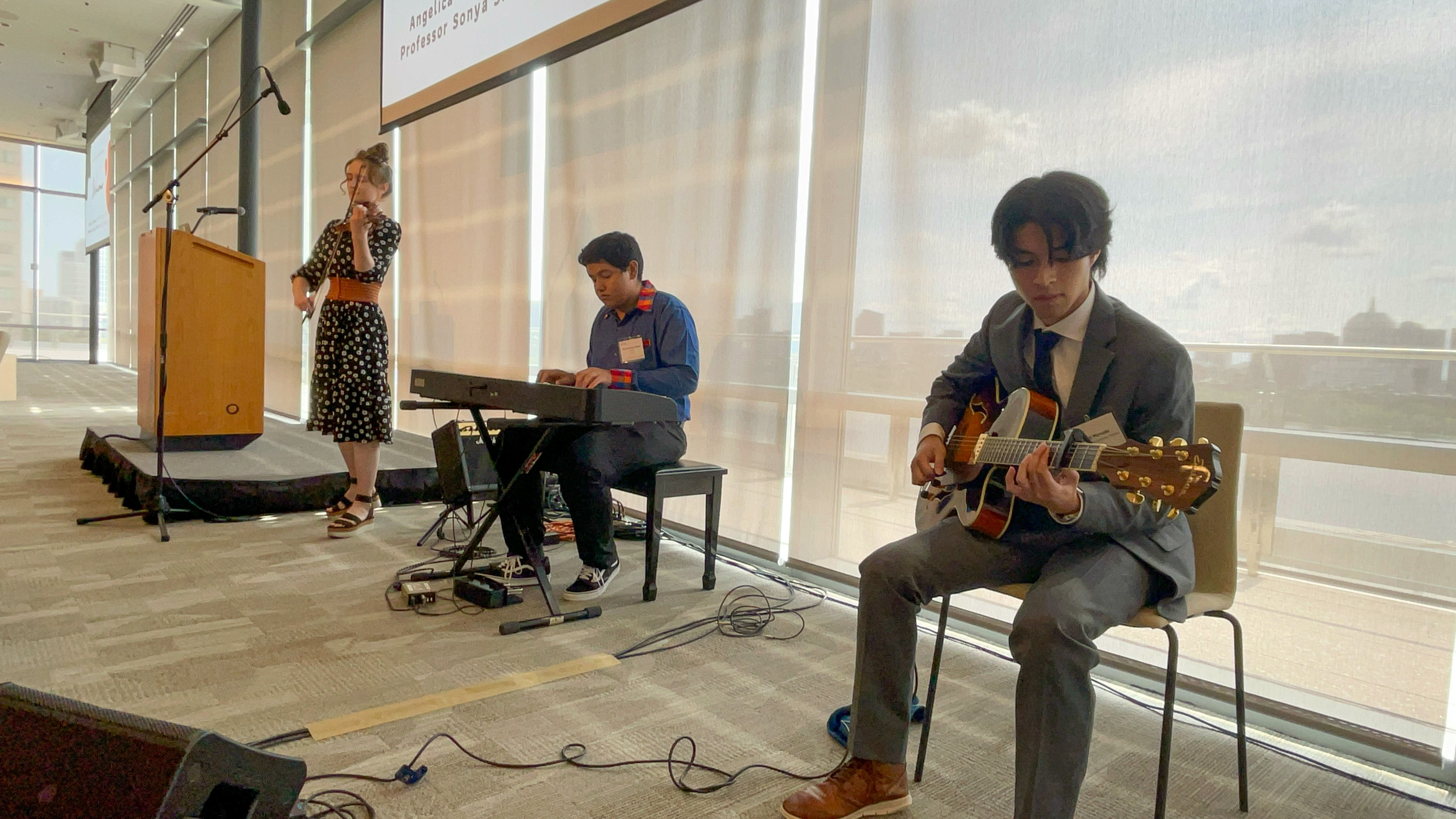Miguel O. Mercado

I am an undergraduate student at USC, where I presently collaborate actively with students and faculty. Previously, I completed the MIT Summer Research Program (MSRP) under the supervision of Dr. Luqiao Liu in 2023, and prior was an NSF-REU Fellow at Penn State advised by Dr. Paul Lammert in 2022.
I am interested in open questions within condensed matter theory encompassing out-of-equilibrium quantum matter and quantum information science.
Email: momercad@usc.edu
Here is a link to my current CV.
I am also an APS Student Ambassador and founding organizer for USC's Physics & Astronomy Mentorship Program for Undergraduates (PAMP). Outside of doing physics, I'm passionate about basketball, I play guitar in an alternative rock band, and am a former writer for the Daily Trojan.
My work is generously supported by the Astronaut Scholarship Foundation.
Physics journals
> Classical Mechanics
> Quantum Mechanics/QFT
> Condensed Matter/QI
Notes and ideas
> Analytical Recipes
> Topological mass generation vs. Higgs mechanism
> 3D gauge Ising model as string theory
> Dyson singularity
> Reparameterization symmetry, Lorentz algebras in light-cone coordinates
and light-cone gauge
> Magnons and topology
> Science communication: What makes a good presentation?
> 2d TQFTs and Frobenius algebras
> Topology vs. decoherence - a case study
> Relaxation dynamics of Goldstone modes in noisy spin lattices
> Open quantum SPTs in one dimension
Here are some questions I'm currently thinking about:
• How do we conceptually and phenomenologically understand topological phases
out of equilibrium? (e.g. open quantum systems, periodically driven, interacting or with disorder?), and/or in materials? (e.g. FMs, AFMs, graphene analogues?)• Can we apply state-of-the-art quantum devices (e.g. cold atom arrays, solid state simulators, NV-centers, spintronic devices) to study non-trivial footprints of quantum systems? (e.g. dynamics and thermalization?)
• What are the fundamental roles of symmetries, topology, and quantum information in many-body physics? Can we experimentally realize testbeds for these ideas?
• How do we improve mathematics and physics education to be more fun, engaging, and accessible at all levels?
Publications
Papers
My research activity is also viewable on my Google Scholar
.
1. Simulating one-dimensional Floquet topology on a noisy quantum processor
In-a-nutshell: We implement and analyze the long-time dynamics for a collection of periodically-driven topological phases on superconducting hardware and identify a natural finite-depth circuit structure for Floquet topological insulators invariant with system size. We demonstrate that protection of chiral symmetry in driven systems can significantly extend coherence times in experiment.
2. Dynamics of symmetry-protected topological matter on a quantum computer
In-a-nutshell: We introduce and apply a quantum circuit structure with constant depth capable of realizing time-evolution of topological models up to arbitrarily long times. As an initial application, we demonstrate experimental detection of localized modes in (non-interacting) topological insulator molecules, and point out that it is possible to generalize to interacting/higher dimensional lattices.
3. A Probabilistic Foundation for Cluster Expansion
In-a-nutshell: We reformulate the Cluster Expansion Method on an axiomatic basis where cluster components of configuration functions are interpreted Möbius inversion of conditional expectation based in Hilbert space geometry, addressing a conventional underdetermination issue. The formalism developed provides inspiration behind engineering numerical training sets.
M. Mercado, K. Reyes, A. Prem, A. Nakano, R.D. Felice, S. Haas
In prep (submission to Phys. Rev. Lett), 2025
M. Mercado, K. Chen, P. Darekar, A. Nakano, R.D. Felice, S. Haas
Physical Review B 110 (7), 075116 (2024).
P. Lammert, M. Mercado, V. Crespi
(Early version) arXiv:2210.10937 (2022)
Presentations (talks, posters, videos)
> Colloquium: Probing Topological Quantum Matter, invited speaker at Bryn Mawr College (2023).
> 3d gauge Ising model as string theory, talk at USC string theory course seminar (2023)
* * * * *
People
* I am extremely fortunate to be mentored by extraordinary people! I would like to mention: *
> Stephan Haas (USC), condensed matter theorist, physics dep. chair
> Scott MacDonald (USC), string theorist, physics/mathematics orator
> Aiichiro Nakano (USC), computational scientist, physicist, polymath
> Rosa Di Felice (USC), theoretical/computational physicist, quantum chemist
> Bhavna Sharma (USC), materials/environmental engineer, architect, designer
> Luqiao Liu (MIT), experimental physicist and device inventor
> Zhongqiang Hu (MIT), theoretical and experimental physicist, research mentor
> Abhinav Prem (IAS), condensed matter theorist/mathematical physicist
> Michael Markesbery (OROS Labs), inventor/entrepreneur, astronaut scholar
... in addition to everyone who is supporting me!

"Time-reversal symmetry breaking": magnon (spin-wave) propagating through a honeycomb lattice. (Credit: NIST)

Guitar performance at the 2023 MIT Summer Research Closing Ceremony. Featured: Angelina Rogatch (violin, physical chemist), Derick Flores (piano, astrophysicist).